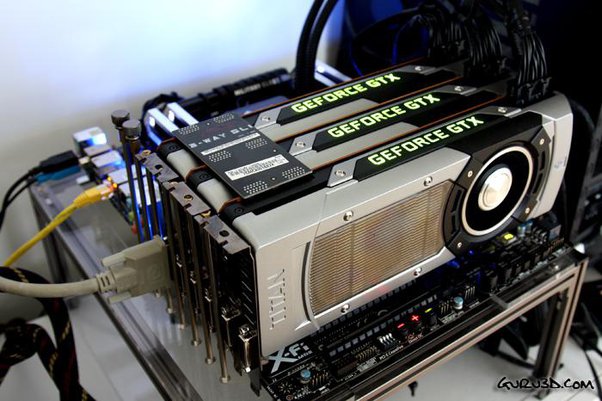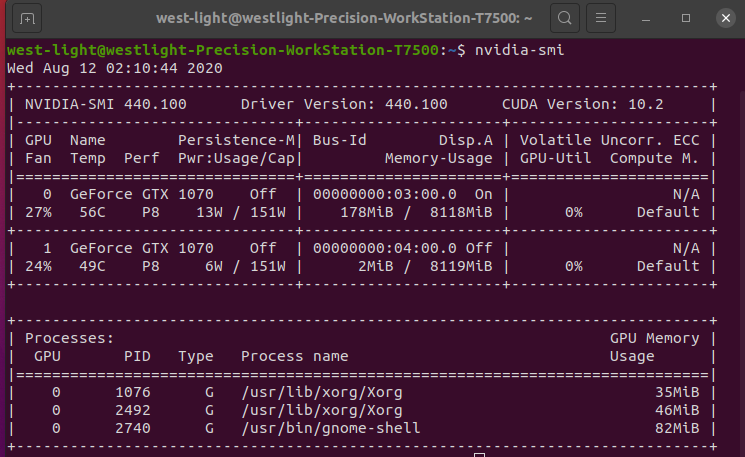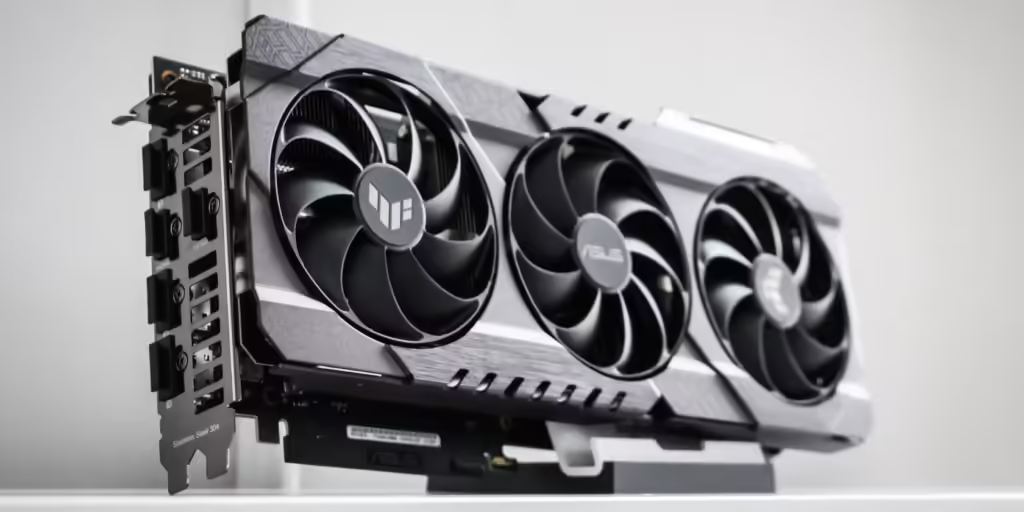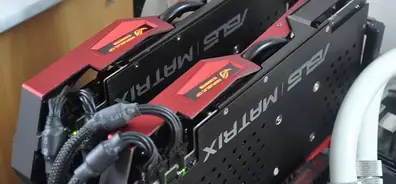Is A Dual GPU Set Up Possible For Gaming On Linux – Ultimate Guide 2024!
Many Linux gamers have successfully set up dual GPUs, though it often involves complex configuration and troubleshooting. While some have enjoyed improved performance, others found it challenging due to driver compatibility issues.
Yes, a dual GPU setup for gaming on Linux is possible, but it can be complex. It requires careful driver installation and configuration. While it can improve performance, challenges with setup and compatibility are common.
In this article, we will discuss “is a dual gpu set up possible for gaming on linux“.
What Is A Dual GPU Setup?
A dual GPU setup means using two graphics cards in one computer. This setup can make games and applications run faster and look better. It’s often used by gamers or professionals who need extra power for high-resolution displays and detailed graphics.
Why Use Dual GPUs?
- Better Performance: Dual GPUs can make games and applications run faster, especially with high settings and resolutions.
- Higher Frame Rates: It helps achieve smoother gameplay by increasing the number of frames per second.
- Improved Graphics Quality: Dual GPUs can handle more detailed graphics, making visuals look better.
- Future-Proofing: It helps keep your system powerful enough to handle new and demanding games or tasks.
- Enhanced Multitasking: It can improve performance for tasks like video editing or 3D rendering.
Also Read: Runtimeerror: No Gpu Found. A Gpu Is Needed For Quantization. – Here’s How to Fix It!
When Is A Dual GPU Setup Useful?
A dual GPU setup is useful when you need extra power for demanding tasks. It helps if you play games at high resolutions, like 4K, or use detailed graphics settings. It’s also beneficial for activities that need a lot of graphics power, such as video editing or 3D rendering.

With dual GPUs, you can get smoother performance and better visual quality, making it easier to handle complex or high-quality graphics.
Dual GPUs on Linux:
Using dual GPUs on Linux involves setting up two graphics cards to work together in one computer. This can improve performance for gaming and other graphics-heavy tasks.
It requires careful installation of drivers for each GPU and proper configuration of your system settings. Linux supports dual GPUs, but it can be more complex to set up compared to Windows. You might need to adjust settings and troubleshoot issues to get both GPUs working effectively.
How To Set Up Dual GPUs On Linux?
Setting up dual GPUs on Linux involves several steps to ensure both graphics cards work together effectively. Here’s a simple guide to help you through the process:

1. Check Hardware Compatibility:
Make sure your motherboard has enough PCIe slots for both GPUs. Check if your power supply can handle the extra power needed and that your case has enough space for both cards.
2. Install the GPUs:
Physically install both GPUs into the PCIe slots on your motherboard. Connect the necessary power cables to each GPU and ensure they are securely seated.
3. Install Drivers:
- NVIDIA GPUs: Install the NVIDIA drivers from their website or your Linux distribution’s repository. Use the command line or graphical tools to ensure the drivers are correctly installed.
- AMD GPUs: Use the open-source Mesa drivers or AMD’s proprietary drivers, depending on your preference. Install them through your package manager or directly from AMD’s website.
4. Configure the Display Server:
- Xorg: Edit the `xorg.conf` file to configure how both GPUs are used. You may need to specify settings for each GPU and how they should handle displays. This file is usually located in `/etc/X11/`.
- Wayland: This display server is newer and might not support dual GPUs as well as Xorg. For best results, use Xorg if possible.
5. Adjust System Settings:
Use system tools and commands to verify that both GPUs are recognized and working. Commands like `lspci` can list your hardware, and tools like `nvidia-settings` or `radeon-profile` can help manage GPU settings.
6. Test and Optimize:
Run some games or applications to see if both GPUs are being used effectively. You might need to tweak settings or troubleshoot any issues that arise. Monitor temperatures and performance to ensure everything is working correctly.
Also Read: Can A Motherboard Bottleneck A Gpu – Ultimate Guide For 2024!
How Do I Check If Both GPUs Are Working On Linux?
To ensure both GPUs are functioning properly on your Linux system, follow these steps:
1. Use the `lspci` Command:
The `lspci` command lists all PCI devices connected to your system, including GPUs. Open a terminal and type:
lspci | grep -i vgaThis command will show information about your GPUs. You should see entries for both graphics cards.
2. Check Driver Installation:
Verify that the correct drivers are installed and loaded for both GPUs. For NVIDIA GPUs, use:
nvidia-smiFor AMD GPUs, you can use:
glxinfo | grep "OpenGL renderer"These commands should display information about the GPUs and confirm that the drivers are active.
3. Use `nvidia-settings` for NVIDIA GPUs:
If you have NVIDIA GPUs, you can use the `nvidia-settings` tool to check GPU status and settings. Open a terminal and type:
nvidia-settingsThis tool provides a graphical interface to view information about your NVIDIA GPUs, including temperature, usage, and more.
4. Check GPU Usage with `watch` Command:
To see how each GPU is being used, you can use the `watch` command to monitor GPU usage in real-time. For NVIDIA GPUs:
watch -n 1 nvidia-smiFor AMD GPUs, use:
watch -n 1 radeontopThese commands will update the display every second, showing real-time usage statistics.
5. Review Logs and System Messages:
Check system logs for any errors related to GPU detection or driver issues. Look in files like `/var/log/Xorg.0.log` or use the `dmesg` command to see kernel messages:
dmesg | grep -i gpuThis helps identify if there are any problems with GPU initialization or conflicts.
Also Read: How Many Gpu Cores Do I Need – Complete Guide For 2024!
How Can I Troubleshoot Issues With Dual GPUs On Linux?
To troubleshoot issues with dual GPUs on Linux, start by checking if both GPUs are recognized using the lspci command. Make sure the correct drivers are installed for each GPU—NVIDIA drivers for NVIDIA cards and Mesa or AMD drivers for AMD cards.

Use tools like nvidia-settings or radeon-profile to manage and verify GPU settings. If you encounter conflicts or errors, review system logs in /var/log/ or use the dmesg command to check for messages related to GPUs.
For further help, consult Linux forums or the support pages for your GPU’s manufacturer, such as NVIDIA’s Linux support page or AMD’s support page.
How Do I Know If My Linux Distribution Supports Dual GPUs?
To find out if your Linux distribution supports dual GPUs, check the distribution’s documentation or support forums. Most popular distributions like Ubuntu, Fedora, and Arch Linux offer support for dual GPUs, but you might need to configure settings manually.
Look for information about GPU support in the distribution’s official documentation or community pages. You can also check compatibility and setup guides on forums or from the distribution’s website, such as Ubuntu’s support page or Arch Linux Wiki.
What Are The Risks Of Using A Dual GPU Setup On Linux?
Using a dual GPU setup on Linux can be risky due to potential driver conflicts and system instability. Different drivers for each GPU might not work well together, causing crashes or poor performance.
Additionally, the setup can be complex, requiring manual configuration and troubleshooting. Make sure to check compatibility and follow setup guides to minimize these risks.
Also Read: Can I Bring A Gpu On A Plane – Ultimate Guide Of 2024!
Will All Games Benefit From A Dual GPU Setup On Linux?
Not all games will benefit from a dual GPU setup on Linux. While some games might run faster and look better, others may not see much improvement. The benefit depends on whether the game supports multiple GPUs and how well the drivers and settings are configured.
Do I Need Special Software To Manage Dual GPUs On Linux?
Yes, you may need special software to manage dual GPUs on Linux. Tools like `nvidia-settings` for NVIDIA GPUs or `radeon-profile` for AMD GPUs can help you configure and monitor the GPUs. Proper management is essential to ensure both GPUs work together smoothly.
Can I Use Any Combination Of GPUs In A Dual Setup On Linux?
Yes, you can use different brands and models of GPUs in a dual setup on Linux, but it might be more complex to manage. Different drivers and settings are needed for each GPU, which can make configuration and troubleshooting more challenging.

Can I Use Dual GPUs For Tasks Other Than Gaming On Linux?
Yes, you can use dual GPUs for tasks other than gaming on Linux, such as video editing, 3D rendering, and other graphics-intensive applications. Dual GPUs can help speed up these tasks by providing extra processing power.
Also Read: My GPU Only Has 1 HDMI Port – Complete Guide 2024
Will Using Dual GPUs Increase Power Consumption Significantly?
Yes, using dual GPUs will increase power consumption significantly. Each GPU requires extra power, so your power supply unit (PSU) needs to be strong enough to handle the additional load. Make sure your PSU can support both GPUs to avoid power issues.
Can I Use Dual GPUs On Linux With Only One Monitor?
Yes, you can use dual GPUs on Linux with just one monitor. You will need to configure your system settings to manage how both GPUs handle the display. This setup is possible, but it may require extra configuration to get everything working correctly.

FAQs:
1. Can I Use A Dual GPU Setup With Linux Mint?
Yes, you can use dual GPUs with Linux Mint, but setting it up might be tricky. You’ll need to install the correct drivers and configure the system properly.
2. Do I Need A Special Motherboard For Dual GPUs On Linux?
You need a motherboard with enough PCIe slots to fit two GPUs. Check your motherboard’s specs to make sure it supports this setup.
3. Can Dual GPUs On Linux Help With Video Playback?
Dual GPUs might not improve video playback much. They are mainly for gaming or tasks that need a lot of graphics power.
4. What If One GPU Is Not Working In A Dual Setup On Linux?
If one GPU isn’t working, check if the drivers are installed correctly and that the GPU is properly connected. You might need to adjust your settings.
5. Can I Switch Between GPUs On Linux?
Yes, you can switch between GPUs, but it requires changing settings in your system. Some tools or commands might help with this.
6. Is It Hard To Set Up Dual GPUs On Linux?
Setting up dual GPUs on Linux can be complex. It involves installing drivers and configuring settings, which might require some technical knowledge.
7. Will Dual GPUs Use More Memory On Linux?
Dual GPUs use more power and can generate more heat, but they do not use more system memory. They work together to process graphics.
8. Can I Run Dual GPUs With Different Brands (AMD and NVIDIA) On Linux?
Yes, you can use AMD and NVIDIA GPUs together, but it might be more challenging to set up and manage.
Conclusion:
In conclusion, a dual GPU setup for gaming on Linux is possible but comes with challenges. It can boost performance and enhance graphics, but setting it up requires careful driver installation and configuration. Not all games may benefit, and driver conflicts or power issues might arise. With proper setup and troubleshooting, dual GPUs can offer improved gaming experiences and performance.
Related Posts:
- What Should Gpu Temp Be While Gaming – Upgrade Your Knowledge!
- Is 70c Safe For GPU – Read Our Latest 2024 Guide!
- How Hot Is Too Hot For GPU – Avoid Overheating 2024!
- Is 85 C Hot For GPU – Complete Guide Of 2024!

James George is a GPU expert with 5 years of experience in GPU repair. On Techy Cores, he shares practical tips, guides, and troubleshooting advice to help you keep your GPU in top shape. Whether you’re a beginner or a seasoned tech enthusiast, James’s expertise will help you understand and fix your GPU issues easily.







